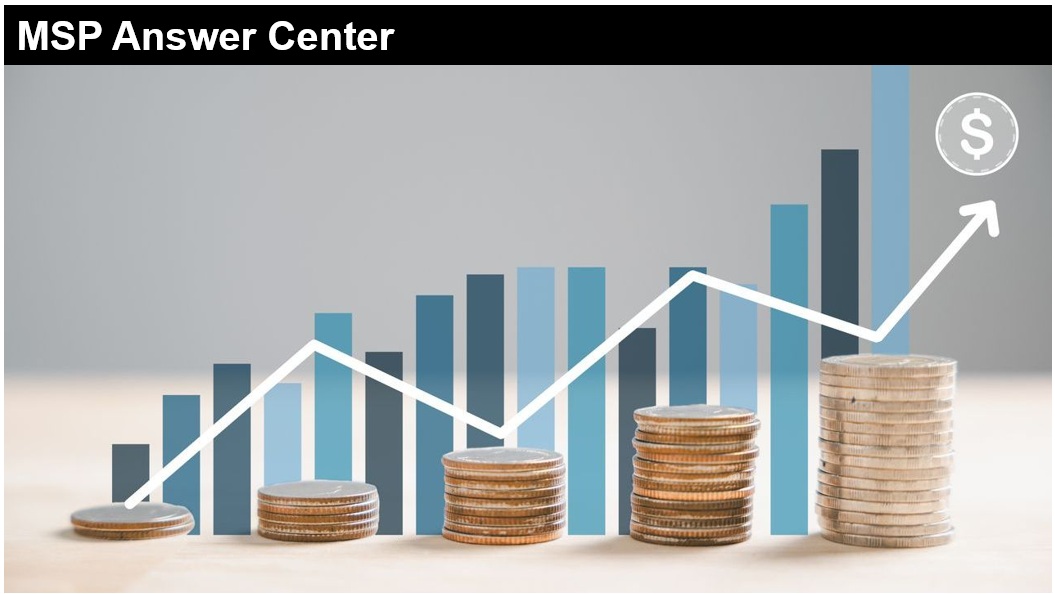Financial forecasting often feels like throwing darts at a moving target. Revenue estimates fluctuate, cash flow surprises pop up, and decision-making gets harder when you’re working with fuzzy numbers. For many MSPs, there’s a disconnect between sales projections and real-life results: The forecast isn’t tied closely enough to the pipeline.
That’s a big miss. Your pipeline, if set up right, is more than just a list of potential deals. It’s a map of your near-future business reality. If you learn to build financial forecasts using real-time pipeline data, you can stop guessing and start leading with confidence.
Here’s how to bring sales and finance together in a way that gives you true visibility into your MSP’s future.
Get Serious About Pipeline Hygiene
The first rule of pipeline-driven forecasting: garbage in, garbage out. Before you can trust your sales data to inform your financial plan, you need to clean it up.
Ask the following questions:
- Are deal stages clearly defined?
- Is every opportunity assigned an expected value and close date?
- Are probabilities realistic, or is every deal stuck at 80% forever?
Sit down with your sales lead or the owner of the new business, and scrub the pipeline. If your CRM doesn’t have a standardized deal progression, build one. No forecast will work if your pipeline is a wish list instead of a working system.
Assign Probability-based Weighting
Forecasting is more than just the total value of all deals. It’s what is likely to close and when. That’s where deal-stage probabilities come in.
Take, for example, if you have $150,000 in total pipeline. If $75,000 of that is in early-stage discovery and only $25,000 is in contract negotiation, your real near-term forecast is closer to $60,000, depending on your close rate history.
Weigh each deal by its stage and likelihood of closing. If you’re using a CRM, many systems will do this math for you. If not, a simple spreadsheet will work. Now, you are forecasting based on reality and not just revenue potential.
Tie Forecasted Revenue to Operational Capacity
Once you have a weighted forecast, translate that into actual service delivery. Consider the following:
- Do you have enough engineers to handle onboarding if all late-stage deals close next month?
- Will you need to purchase additional licenses or ramp up your help desk?
This is where many MSPs struggle, not with the forecast itself, but with aligning it to the operational ripple effects. A sales bump without service readiness is a customer satisfaction dip waiting to happen.
Forecasting gives you time to prepare. Without it, growth can feel like a threat instead of an opportunity.
Use Historical Data to Spot Red Flags
Not all pipeline is created equal. If you consistently lose a certain type of deal at the final stage, that should influence how you weigh it. If a particular salesperson tends to overestimate close dates, adjust accordingly.
Rather than assigning blame, make your forecast smarter over time.
Track how often projected revenue materializes within the month or quarter you expected. If you’re regularly off by 30% or more, it’s a sign that your pipeline model needs tweaking. Invest in better forecasting tools or training for your team.
Revisit the Forecast Weekly
Forecasts aren’t static; they’re living documents. Every new lead, delayed decision, or signed deal changes the picture.
A weekly forecast review — even a 15-minute one — helps you stay proactive. It’s your chance to adjust hiring timelines, prepare for cash flow needs, and set realistic expectations for growth or plateau periods.
Better yet, tie your forecast into a rolling 90-day window. That way, you’re always looking ahead, instead of reacting to what already happened. Some are even using AI to assist with sales forecasting and lead generation.
A Forecast You Can Trust
Too many MSPs treat forecasting like a hopeful exercise, but when it’s tied directly to your sales pipeline and adjusted regularly, it becomes a leadership tool.
It helps you plan, budget, hire, and deliver more effectively. It gives you confidence when talking to partners or investors and, maybe most importantly, it keeps surprises to a minimum.
If your pipeline is the engine, your forecast is the windshield. Driving blind is never a smart way to scale.
Next Steps
- Want more helpful guidance on this topic? Check out our Running a Profitable MSP Answer Center.
- Have a question for our experts? Send it to editors@channelpronetwork.com
ChannelPro has created this resource to help busy MSPs streamline their decision-making process. This resource offers a starting point for evaluating key business choices, saving time and providing clarity. While this resource is designed to guide you through important considerations, we encourage you to seek more references and professional advice to ensure fully informed decisions.
Featured image: DALL-E













